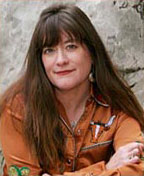


Here is a review from The Jackson Sun for the book Public Cowboy No. 1: The Life and Times of Gene Autry by Holly George-Warren.
Gene Autry biography presents warts-and-all portrait of Western star
By Dan Morris
April 22, 2007

A few weeks ago, we told you about our visit to the Autry National Center at Griffith Park in Los Angeles.
Gene Autry – the late, great singing cowboy and movie star of the 1930s, '40s and '50s – is largely responsible for the museum, which features different aspects of the American West.
The day that column was published, I received an e-mail from California, telling me about a new book on the life and times of Autry. "Public Cowboy No. 1," written by Holly George-Warren, is being released to book stores this month. It coincides with this year's Gene Autry Centennial celebration. He would have been 100 on Sept. 29.
Those of us 50 or older know Autry mainly from his days as a singing cowboy in the movies. He later owned the Los Angeles Angels Major League Baseball team. Autry was a hero to thousands of young boys in the 1940s and '50s. We all wanted to be a cowboy, ride a horse, rope a steer and spin a six-shooter like Gene or Roy Rogers. Their TV shows came on each Saturday, and you could still see them on the big screen at small-town theatres on Saturday afternoons.
If you want to retain that untarnished image of Autry the hero, don't read this book.
If you can handle the truth as documented in George-Warren's 400-page report, then you will enjoy riding the trail that took Autry from a troubled boyhood in Texas and Oklahoma to an amazing fortune. This book shows us the true Gene Autry, from his birth in 1907 until his death on Oct. 2, 1998, at the age of 91.
It is a bittersweet tale, revealing Autry's habitual infidelity and alcoholism that tarnished his image when his popularity waned in the late 1950s and early '60s. His last live performances were in 1962.
He then turned his attention to all his business interests, especially the Angels baseball team. He gave $180 million to charities and was worth an estimated $320 million at his death.
The book is extremely detailed, explaining how Autry learned to play the guitar and became determined to become a successful singer while still working for the railroad. His first hit record was "That Silver-Haired Daddy of Mine" in 1931. It sold a phenomenal 30,000 copies in the first month and 500,000 copies overall.
He helped transform "hillbilly music" into what became known as "country and western." His image as a singing cowboy was carefully shaped, and his popularity on the big screen was incredible.
It didn't hurt that he swept the nation with two of the most cherished secular Christmassongs of all time – "Rudolph the Red-Nosed Reindeer" and "Here Comes Santa Claus."
He first appeared on screen in 1934 and starred in 93 feature films. In 1940, theater exhibitors of America voted Autry the fourth-biggest box office attraction, behind Mickey Rooney, Clark Gable and Spencer Tracy.
From 1940 to 1956 Autry was heard weekly over the CBS Radio Network on Gene Autry's "Melody Ranch Radio Show." His trademark theme song was "Back in the Saddle Again."
Autry was the first performer to sell out Madison Square Garden in New York, and his personal appearance tours were amazing. He did two shows a day, seven days a week, for 65 to 85 consecutive days, before his drinking took its toll. He made 635 recordings and sold more than 100 million copies.
Autry is the only entertainer to have five stars on Hollywood's Walk of Fame, one each for radio, records, film, television and live theatrical performance (including rodeo).
The hardback book costs $28, so you might want to wait until Father's Day to take the plunge. But it's a good read for those of us who rode with Gene and Roy in our happy dreams of youth.